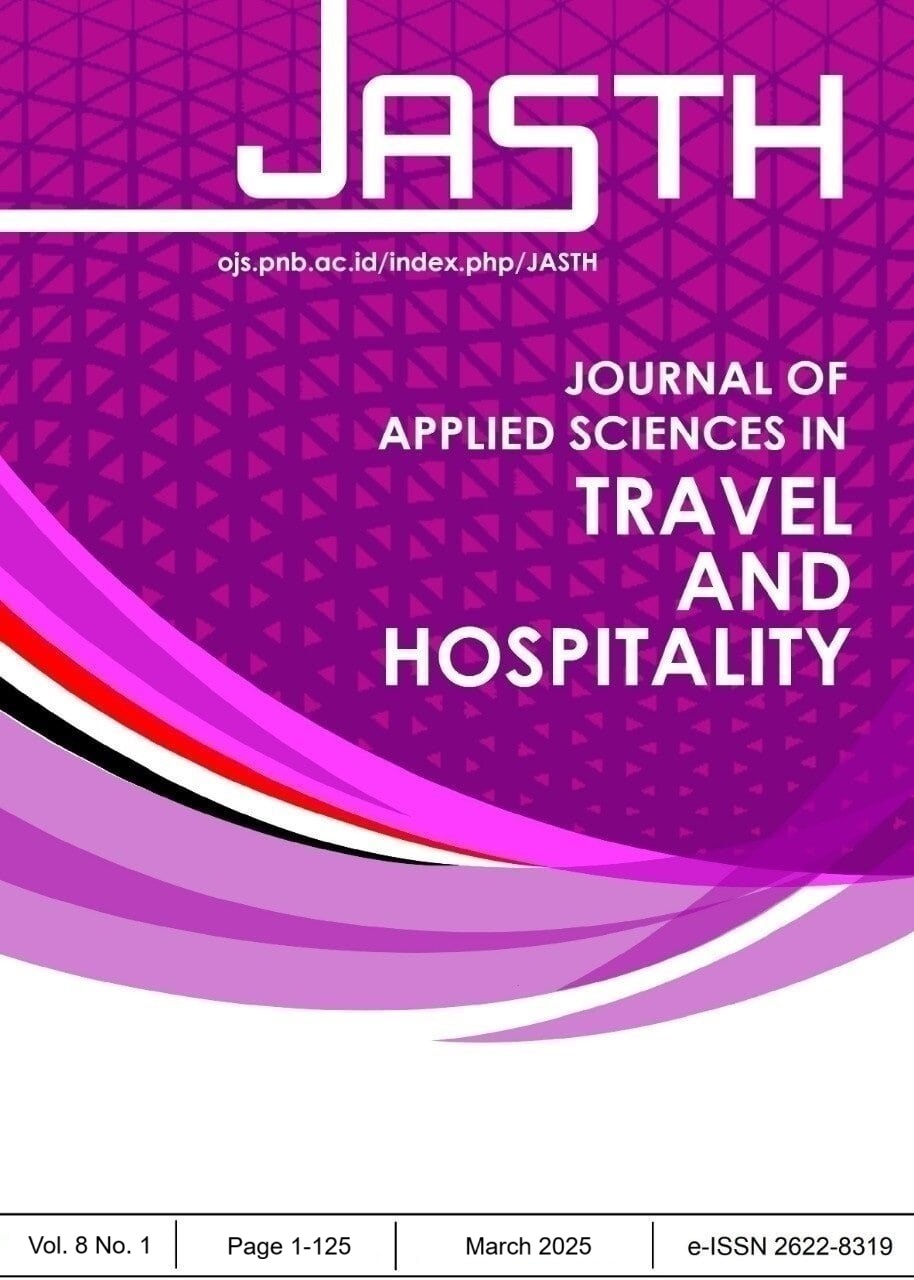Integrating gastronomic potential in tourism destinations: A case study of the Likupang special economic zone, North Minahasa, Indonesia
DOI:
https://doi.org/10.31940/jasth.v8i1.24-35Keywords:
gastronomic, integration strategy, local culinary, tourism destination, tourist village, SEZ LikupangAbstract
This research aims to analyze the integration stages of gastronomic tourism in the Likupang Special Economic Zone. Several potential culinary icons have been identified and can be developed as gastronomic tourism attractions for the SEZ Likupang. The research method used is qualitative. The data collection techniques used include field observations, in-depth interviews, and literature studies to obtain a complete picture of the efforts to integrate gastronomic tourism in the development of the SEZ Likupang destination. In-depth interviews were conducted during observations with 7 key informants across SEZ Likupang stakeholders, namely the government, entrepreneurs, and culinary practitioners. This research aims to identify key factors influencing gastronomic tourism integration in the Likupang SEZ and measure its feasibility through stakeholder perspectives and policy alignment. Specifically, it evaluates the level of current integration efforts and identifies the economic and cultural impact of gastronomic tourism on the local community. The purpose of this research is to analyze the conditions and identify the potential so that it can provide strategic recommendations for the central and regional governments to initiate the integration stages of gastronomic tourism using the methodological framework developed by the UNWTO. The results of this study indicate that the SEZ Likupang is still in the early stages of destination development and has not made systematic efforts to integrate its gastronomic tourism potential. In addition, there are also 14 culinary icons and 10 recommendations for the integration strategy stages of gastronomic tourism that can be developed and implemented in the development of the SEZ Likupang.












